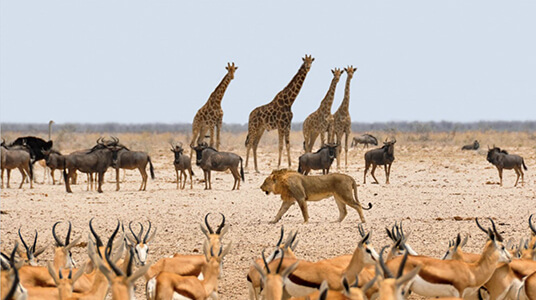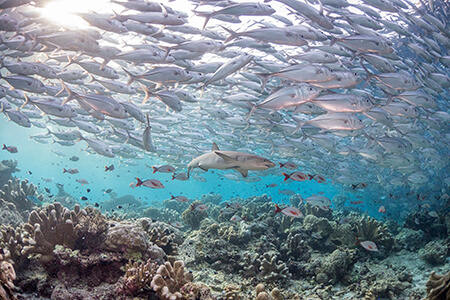This is a lesson summary. The full lesson can be viewed by purchasing an online course subscription.
Learning Objective
In this lesson we will look at feeding relationships between organisms and how they transfer nutrients and energy within ecosystems.
Learning Outcomes
By the end of this lesson you will be able to:
- Distinguish between producers, consumers, detritivores and decomposers.
- Describe how food chains and food webs represent feeding relationships in ecosystems.
- Explain what a trophic level is and distinguish between primary, secondary and tertiary consumers.
- Compare the movement of nutrients and energy in ecosystems.

(Image: PxHere)
Lesson Summary
- Producers are organisms that synthesise their own food through photosynthesis.
- Consumers are organisms that eat other organisms, as they cannot produce their own food.
- Herbivores are animals that only eat plants.
- Carnivores are animals that only eat other animals.
- Omnivores are animals that eat plants as well as other animals.
- Detritivores and decomposers are organisms that feed on dead organic matter and waste.
- Detritivores ingest food and digest it internally.
- Decomposers release enzymes and digest food externally.
- Producers are also known as autotrophs.
- Consumers, detritivores and decomposers are also known as heterotrophs.
- Food chains are a way of representing the order of consumption in an ecosystem.
- They can be represented as:
producer → primary consumer → secondary consumer → tertiary consumer
- The arrows in a food chain mean ‘is eaten by’.
- Each stage of a food chain is called a trophic level.
- A food web is a network of interconnected food chains that shows all the feeding relationships within an ecosystem.
- Nutrients are recycled within ecosystems due to the actions of detritivores and decomposers.
- Energy is lost from ecosystems in the form of heat as it moves between trophic levels.
- This results in less organism at higher trophic levels and limits food chains to four or five trophic levels.

(Image: Avoini, Wikimedia Commons)
(Header image: tonymills, Adobe Stock)
